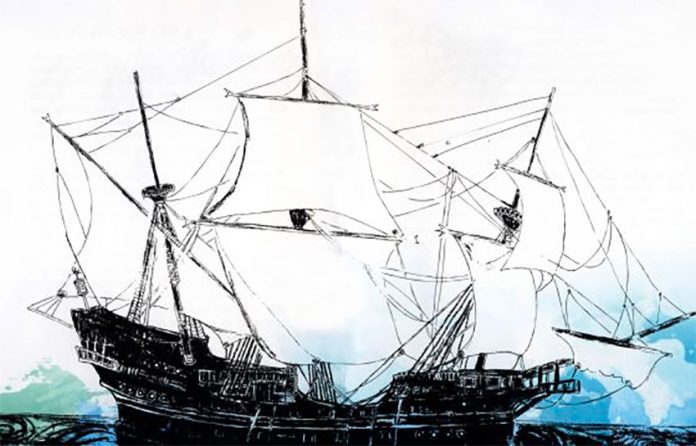Spain and Mexico are set to search for the wreckage of a Spanish ship that sank in the Gulf of Mexico in 1631.
Nuestra Señora del Juncal was part of a 13-vessel fleet that left Cádiz, Spain, in 1630. After leaving on its return voyage from the port of San Juan de Elúa, Veracruz, in 1631, it and the Santa María sank in a storm.
Planned for May or June of 1631, its return voyage had been delayed due to the threat of pirates lying in wait near the west coast of Cuba. The Spanish crown’s need for the precious metals and other American goods on board forced it to launch in October despite the risk of crossing the gulf during cold front season.
Severe weather from a strong northerly storm dispersed the fleet a few days after leaving port. Thirteen days into the voyage, the crew had tossed its cargo and canons overboard, and even cut down the main mast, but the ship continued to take on water.
Those on board began to make preparations for death, the crew forming crosses with sticks and shouting their last confessions, while the noblemen locked themselves in their cabins to say their final prayers.
After weeks of fighting the storm, Nuestra Señora del Juncal succumbed to the wind and waves on November 1 and sank to the bottom of the Bay of Campeche.
The story of the ship’s final days was recorded for posterity by the 39 survivors who were rescued the following day in a lifeboat.
The search for its remains will be carried out over 10 days in the spring and will be financed by both Mexico and Spain. A team of experts from the National Museum of Subaquatic Archaeology in Cartagena, Spain, will aid in the search efforts.
The decision to search for the ship comes as a result of a memorandum of understanding signed by both countries in June 2014, which promotes joint subaquatic archaeological projects between Mexico and Spain.
Part of the project includes an exhibition of Nuestra Señora del Juncal, which will visit both countries, its first stop being in Sevilla, Spain.
The countries also agreed to carry out investigations of the commercial route called the Manila Galleons, which connected Mexico to the Philippines from 1565 to 1815.
Specialists from Mexico, Spain and the Philippines will meet in Acapulco, the route’s Mexican terminus, in the fall to begin discussing the project.
Mexico also informed Spain of the advances in the search for the ships scuttled by Hernán Cortes in order to quell a rebellion in 1519. The investigations began in July 2018 and divers have since found anchors believed to belong to the sunken ships.
Source: El Universal (sp)
